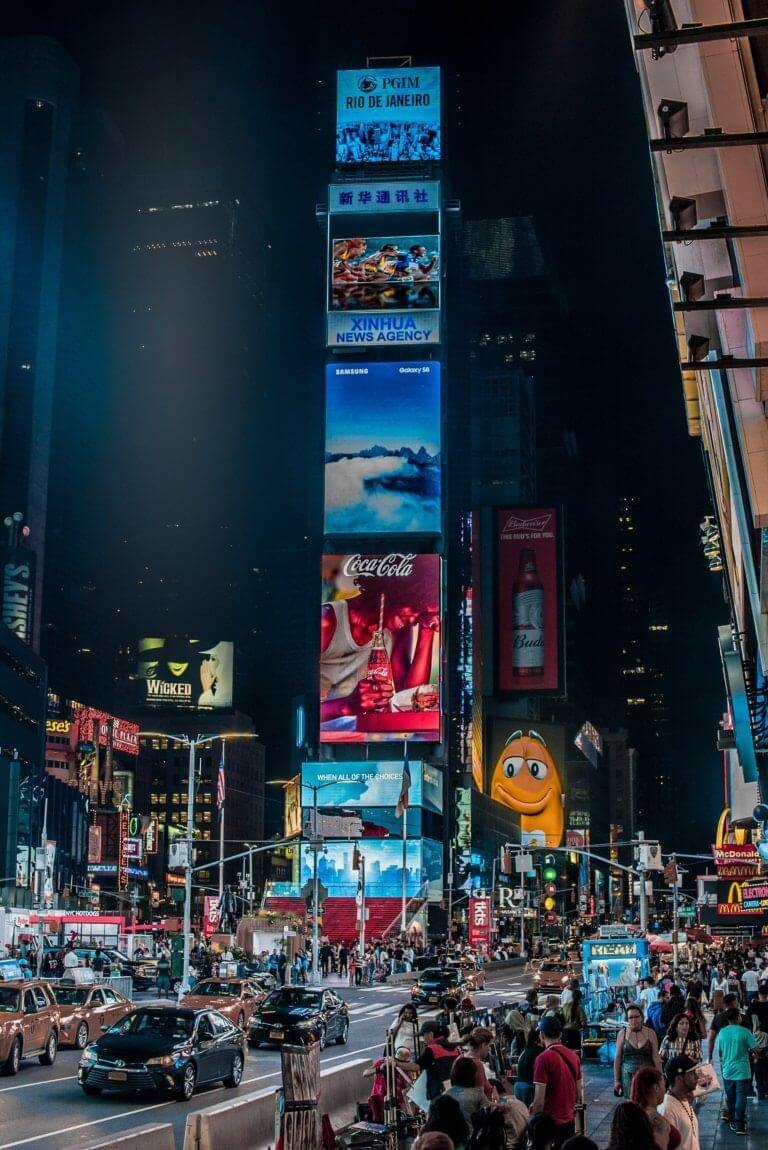
Approximately 55% of the world population lives inside cities, and by 2050, urban areas are projected to house two-thirds of people globally. Managing fast-growing urban areas while building sustainable connected smart cities has become one of the most important challenges of the 21st century. This presents an incredible monetisation opportunity for OOH companies and allows for further engagement with growing audiences.
In a world where media are increasingly more fragmented than before and people can choose what and when to consume content, premium OOH inventories have remained the core channels that can reach mass urban audiences rapidly, consistently and effectively at any time – it cannot be easily skipped or blocked in outdoor environments.

The estimation for out-of-home (OOH) in 2018 is already coming out favourably. This is clearly for the steady trends of innovation and modernisation in the OOH throughout 2018. Increased technology, increased availability of analysis tools and an increased variety of media have provided advertisers with the greater precision and more significant number of opportunities they need in the modern marketplace.
So how can we expect OOH to develop over the next year, and what should advertisers be looking out for when it comes to making the best use of the medium? So to be first and predict some of these developments early, we can start to look toward the future and discuss some of the upcoming OOH trends that we are going to see for 2019.
Mobile and OOH reaching consumers on the move
Despite political and economic uncertainty in 2018, ad spend has continued to grow, albeit slowly. Looking ahead, 2019 forecasts are predicting renewed optimism. After Digital and TV, OOH is set to be one of the most significant contributors to ad spend growth.
In particular, OOH sees significant investment from the technology sector, with 25 per cent of the top 100 spenders in the medium coming from tech companies. Outdoor advertising drives more online activity than any other offline medium. Mobile and outdoor advertising both reach the on-the-go consumer. Brands are now aligning their strategies on both channels to drive more engaging campaigns.
For example, the calls to action on digital billboards are increasingly being used to drive some type of mobile activity – redeem a coupon or voucher, visit a website, or even play a game.
Then there’s also synchronous OOH and mobile campaigns, which enable brands to reach all audiences within that location on all screens – digital billboards and smartphones.
Whether digital or printed, OOH offers tech companies the opportunity to build their brand profile in the real world without the presence of ad blockers. In 2019, OOH can expect to draw more interest from the tech sector, particularly as we see increased integration between DOOH and mobile.
Online data with strategy
2018 has been a year of exciting explorations into the ways that data can feed into OOH. Interconnectivity with digital has enabled OOH advertisers to fine-tune their targeting with detailed demographic data. Brands have experimented with data to identify and connect with consumers in increasingly creative ways.
Jen Smith, the Creative Director of Maxus, predicts that digital will transform OOH “when we really start to get to grips with how all of those data feeds and the capabilities that we have can start to inform the creative message… When we start to play with digital a bit more and seeing what it is capable of, then it can change the industry.”
As 2019 unravels, it will be interesting to see how advertisers harness data to inform ever more creative and engaging ways to connect with consumers. The OOH industry is rapidly moving away from the 2D printed poster format to multi-faceted, multi-channel consumer experiences.
Immersive Out-of-home
With some high-profile Virtual Reality (VR) gaming releases this year and tech giants like Facebook, Google, Apple and Microsoft investing heavily in what they see as the next big thing in display technology, VR and Augmented Reality (AR) are expected to go mainstream in 2019.
This brings a whole host of opportunities to the OOH industry, and particularly, to DOOH. 2018 has seen a rise in the use of AR in OOH advertising, with campaigns like Ribena’s ‘Doodle Your World’ becoming more commonplace on our high streets. And big brands like Adobe and Ikea are already starting to venture into ways in which they can improve the consumer experience using VR.
It makes sense, then, that advertisers will look for new ways to engage consumers with immersive VR and AR experiences in their out-of-home messaging. And with Facebook and Google racing to produce standalone VR headsets that won’t require plugging into a computer, virtual out-of-home advertising may well be coming to a street near to the pedestrians.



